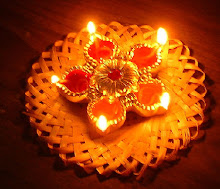History
Main article: History of the Bharatiya Janata Party
See also: Bharatiya Jana Sangh
The BJP is the current form of the erstwhile Bharatiya Jana Sangh (BJS, Indian People's Union), which was founded in 1951 by Syama Prasad Mookerjee as the political wing of the Rashtriya Swayamsevak Sangh. The fortunes of the young party took a dip in 1953, when Mookherjee was jailed in Kashmir by then Indian Prime Minister, Jawaharlal Nehru[citation needed]. After Mookerjee's death in prison, the BJS lasted for 24 more years, but never seriously challenged the power of Indian National Congress[citation needed]. It did however groom future political leaders like Atal Bihari Vajpayee and Lal Krishna Advani, who were in the party when it was a constituent of the Janata Party government in 1977[2].The Janata government did not last long. Morarji Desai resigned as Prime Minister, and the Janata party was dissolved soon after. The BJS had devoted political organization to sustain the coalition and was left exhausted by the internecine wars within the Janata Party.
In 1980 Atal Bihari Vajpayee, Lal Krishna Advani and Bhairon Singh Shekhawat, founded the Bharatiya Janata Party with Vajpayee as its first President. The BJP was a strong critic of the Congress government that followed the Janata rule, and while it opposed the Sikh militancy that was rising in the state of Punjab, it also blamed Indira Gandhi for divisive and corrupt politics that fostered the militancy at national expense. Leader Darasingh opines that Vajpayee thus "brought in Hindu-Sikh harmony."[3]
However, The BJP never supported Operation Bluestar, the BJP strongly protested violence against Sikhs in Delhi that broke out in 1984 following the assassination of Prime Minister Indira Gandhi by one of her Sikh bodyguards. Vajpayee was known and commended for protecting Sikhs against Congress-followers seeking to avenge the death of their leader.[citation needed] The BJP was left with only two parliamentary seats in the 1984 elections; the party, however, had established itself in the mainstream of Indian politics, and soon began expanding its organization to attract young Indians throughout the country. During this period Vajpayee remained center-stage as party President and Leader of the Opposition in Parliament, but increasingly hard-line Hindu nationalists began to rise within the party and define its politics.
The BJP became the political voice of the Ram Janmabhoomi Mandir Movement, which was led by activists of the Vishwa Hindu Parishad (VHP) and the RSS, and was seeking to build a temple dedicated to Lord Rama at the site of the Babri mosque in Ayodhya. Hindu activists believed the site was the birthplace of the Lord, and thus qualified as one of the most sacred sites of Hinduism.
On December 6, 1992, hundreds of VHP and BJP activists broke down an organized protest into a frenzied attack, and brought down the mosque. Over the following weeks, waves of violence between Hindus and Muslims erupted in various parts of the country, killing over 1000 people. The VHP was banned by the government, and many BJP leaders including Lal Krishna Advani were arrested briefly for provoking the destruction. Although widely condemned by many across the country for playing politics with sensitive issues, the BJP won the support of millions of conservative Hindus, as well as national prominence.
With victory in assembly elections of Gujarat and Maharashtra in March 1995, and a good performance in the elections to the Karnataka assembly in December 1994 propelled the BJP to the centerstage. During the BJP session at Mumbai in November 1995, BJP President L.K.Advani declared that Vajpayee would be the Prime Minister of India if the BJP won next parliamentary elections held in May 1996.
In the Lok Sabha elections held in 1998 the National Democratic Alliance (NDA) obtained a simple majority. This time, the BJP (NDA) had allied with the All India Anna Dravida Munnetra Kazhagam (AIADMK) and the Biju Janata Dal besides its existing allies, the Samata Party, the Shiromani Akali Dal and Shiv Sena. Outside support was provided by the Telugu Desam Party. The NDA had a slim majority, and Vajpayee returned as Prime Minister after a 13-day stint in 1996. [3] But the coalition ruptured in May 1999 when the leader of AIADMK, Jayalalitha, withdrew her support, and fresh elections were again called.
On 13 October 1999, the BJP-led NDA won 303 seats. The BJP alone had its highest ever tally of 183. Vajpayee became Prime Minister for the third time, and Advani became the Deputy Prime Minister and Home Minister. This NDA Government lasted its term of five years. Vajpayee and his economic team, led by Finance Minister Yashwant Sinha, continuing the policies initiated by the previous Congress Government under P V Narasimha Rao and Manmohan Singh, pushed through major privatizations of big government corporations, the liberalization of trade under World Trade Organization rules, opening the skies to commercial airlines, foreign investment and ownership and allowed private companies such as Mahindra World City and Reliance to build Special Economic Zones where property developers could build new cities with world-class infrastructure for factories that export products.
The BJP and the NDA suffered an unexpected defeat in the general elections in 2004, and failed to muster a parliamentary majority. A.B. Vajpayee was succeeded as Prime Minister by Dr. Manmohan Singh of the Congress Party, and its United Progressive Alliance.
In the 2009 general elections, BJP again faced defeat and its strength in Lok Sabha reduced to 159 with a loss of about 17 seats. The unexpected defeat of BJP is attributed to bad performance of party in Rajasthan, Uttar Pradesh, Maharashtra, Uttarakhand and Andhra Pradesh.


No comments:
Post a Comment